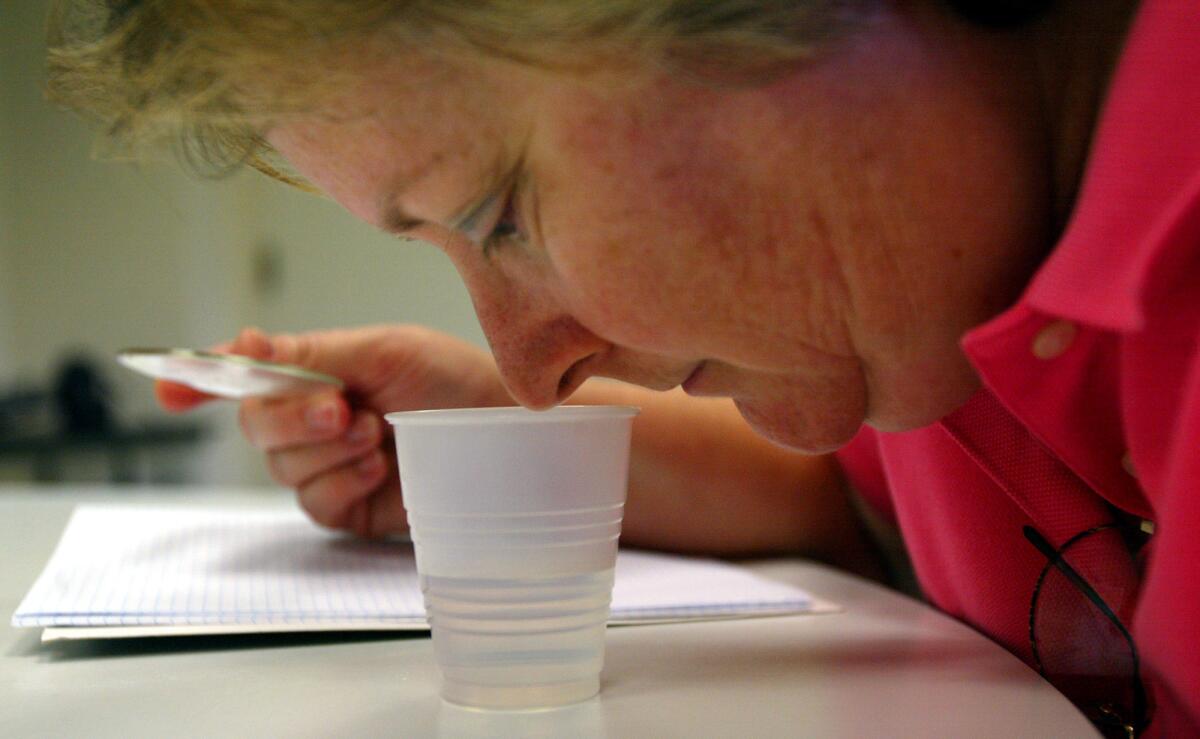Sweetness without sugar? Saltiness without sodium? It might be just around the corner

Aroma plays a far more important role in taste than previously imagined.
- Share via
New understanding about where flavor comes from could have important implications for everything from fruit breeding to making more healthful processed foods.
Traditionally, scientists who study flavor have drawn a distinction between taste — sweet, salty, sour, bitter and (lately) umami — which is picked up by the tongue, and aroma — all those other impressions that make food delicious — which is picked up by the nose.
It turns out, it’s a lot more complicated than that.
Recent experiments have shown that not only do some aromas influence our sense of taste, but that the impact can be quite profound. Not only that, but scientists have been able to identify exactly what those smells are.
When it comes to aroma, the folks who study flavor differentiate between what you smell with the front of your nose (like when you bend over a hot plate and sniff) and what you smell with the back of your nose when you chew food.
It’s the latter, technically called retronasal olfaction, that has the most impact on flavor. And now we know that that impact goes beyond mere aroma.
“Flavor doesn’t exist in the real world,” says Linda Bartoshuk, professor of food science and human nutrition at the University of Florida and a renowned flavor researcher — she helped discover the phenomenon of “super-tasters.”
“You have taste and you have smell and they come together in the brain to create flavor. But now we know that the meaning of the signal can be changed. Smells can enhance or suppress different taste sensations.”
Certain volatile esters — the naturally occurring chemical compounds that create smell — can actually make food taste sweeter, saltier and more bitter. What’s more, recent experiments have shown that the more of these volatile esters that are present, the more profound the change can be.
In fact, in one experiment, adding a group of these esters to a sample of sugar water made it taste twice as sweet as the same sugar water that didn’t have the esters added to it.
The implications of this are important. Because we can identify which volatile esters have the most flavor impact, plant breeders can begin to more systematically develop new varieties that taste better. Perhaps even more important, food processors can improve the flavor of their products without adding more sugar or salt.
Tasting panels have already demonstrated that this is true. For example, even though blueberry samples in one experiment contained more sugar than strawberry samples did, tasters found many of the strawberries, which are a veritable stew of the effective esters, tasted sweeter.
Similarly, when comparing two different varieties of tomato, tasters found the Matina variety tasted twice as sweet as Yellow Jelly Bean, despite the fact that the Yellow Jelly Beans contained more sugar (and had a really sweet name). But Matina contained more of those important esters.
“This is not a minor effect, it’s big enough it really makes a practical difference,” Bartoshuk says. “I’m not even sure we have thought of everything we could do with it.
“We can make a particular fruit taste better. We can now identify the things in the strawberry that make them particularly wonderful, then tell the breeders so they can use that information.
“It’s very exciting to think about all the health benefits we might get out of this. It’s a way to sweeten without adding sugar. You can actually reduce the amount of sugar that’s needed in a food by putting more volatiles in it. That’s a good health outcome.
“Imagine eating a bowl of soup with half the sodium it used to have but it still tastes salty because of the esters that have been added to it. In terms of health, reducing the amount of sodium in food would be major.”
Are you a food geek? Follow me on Twitter @russ_parsons1
More to Read
Eat your way across L.A.
Get our weekly Tasting Notes newsletter for reviews, news and more.
You may occasionally receive promotional content from the Los Angeles Times.









